The Dow Chemical Company operation in Deer Park, Texas, creates specialty chemicals for paint, detergent, floor care, adhesives and sealants, automotive coatings, acrylic plastics, personal care products, water purification, and other diverse markets. The facility covers 700 acres along the Houston Ship Channel and relies on a fleet of rotating equipment to meet production demands. When an overhung blower (see figure 1) that was part of the sulfuric acid unit required shutdown every three to four months for cleaning and rebalancing, the resulting downtime had a severe impact on plant productivity. The trouble was traced to an impeller in the blower.
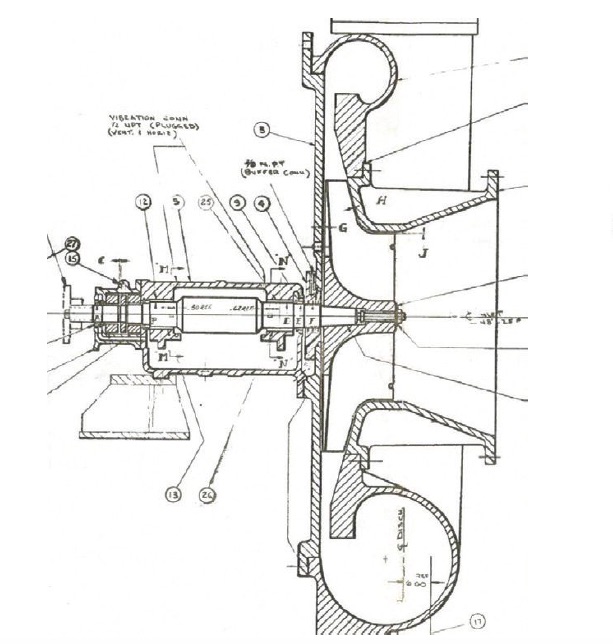
Figure 1: Overhung blower
Product buildup on the machine’s impeller led to mass imbalance and high synchronous vibrations that, if not addressed, could cause catastrophic bearing machine failure. So, every three to four months, the machine had to be shut down for four days (96 hours) for maintenance. To eliminate this frequent cleaning and rebalancing, plant personnel sought the expertise of Bearings Plus® to dampen critical speeds, reduce dynamic bearing loads, and improve vibration response.
The solution was the installation of an integral squeeze film damper on the impeller end of the shaft to reduce vibration amplitudes, make the machine less sensitive to imbalance and shift critical speeds. ISFD® technology, which integrates the damper and bearing, provides highly engineered stiffness and damping to change rotordynamic behavior. For the blower at Deer Park, Bearings Plus paired the ISFD technology with a low-profile Flexure Pivot® tilt pad bearing (see figure 2).
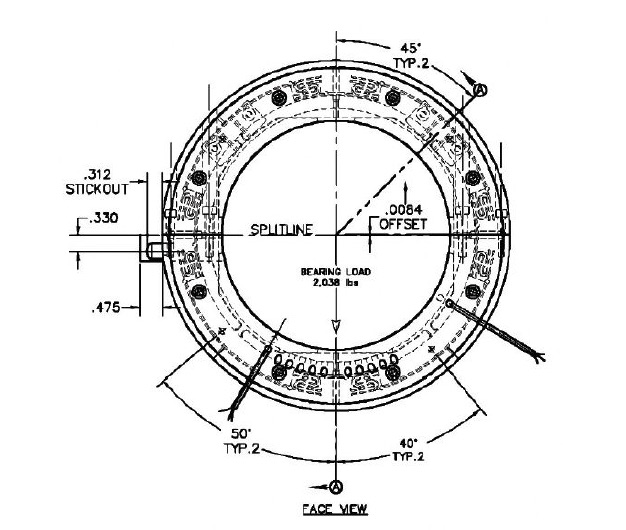
Figure 2: Flexure Pivot journal bearing with ISFD technology
ROTORDYNAMIC ANALYSIS PREDICTS PERFORMANCE
To test the solution prior to installation, Bearings Plus and Dow partnered on a lateral rotordynamic analysis. Baseline rotor models without the integral squeeze film damper were created to provide a comparison with field vibration data. Mapping of the first forward and backward rotor modes, stability analysis, and the synchronous response to imbalance all matched field data.
With confidence established in the rotordynamic modeling through this baseline analysis, Bearings Plus modeled the rotor performance with the proposed ISFD technology/Flexure Pivot bearing on the impeller end only (see figure 3). A support stiffness of 250,000 lb/in was selected so that the radial deflection at the impeller end bearing (for 2,038 pounds of bearing reaction force) was approximately 8 mil. At this stiffness, the optimum damping value for the first mode was approximately 2,300 pounds/in. The static deflection of 8 mils was compensated for by the bearing bore offset of 8 mils opposite to the bearing load (see figure 2).
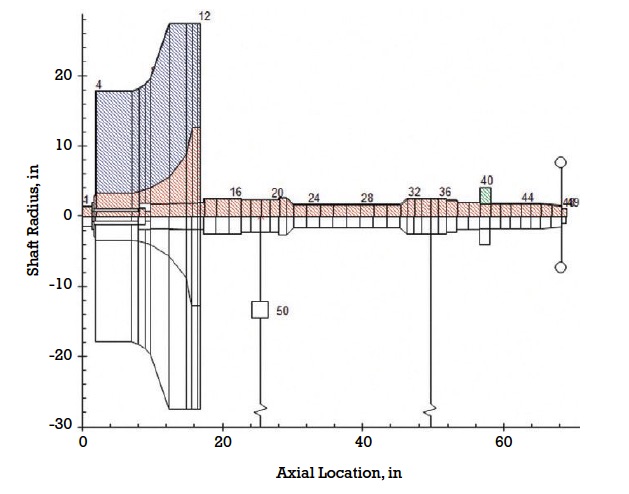
Figure 3: Rotor modeling of overhung blower with new bearing
With this combination of stiffness and damping coefficients at the impeller end bearing support, analysis showed elimination of the critical speed peak in the machine’s vibration response at both the impeller and coupling ends of the shaft (see figure 4). In sum, analysis indicated that the new system was less sensitive to imbalance loading from product buildup on the impeller, which would increase the mean time between maintenance.
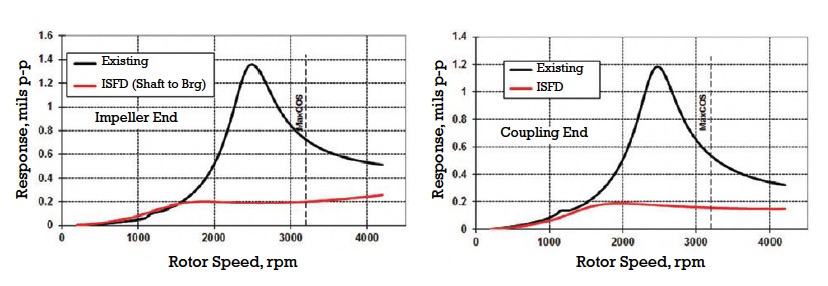
Figure 4: Comparison of synchronous response to rotor imbalance with the original bearing versus the bearing with ISFD technology
INCREASING PRODUCTION IN THE FIELD
In 2013, the ISFD solution was installed in the field. Dow tested the bearing with 31 gm imbalance (at 17-inch radius) to obtain a forced response. Field results confirmed that the ISFD technology reduced synchronous vibration response on both the impeller and the coupling ends, even though ISFD technology was applied to the impeller end only. In regular operation, the first critical speed was completely dampened.
In contrast, the original bearings experienced vibrations of up to 5-6 mils when process carryover occurred and product built up on the impeller. The optimized stiffness and damping with the ISFD technology absorbs the energy of the vibrations to allow continued operation without damage to the bearing (see figure 5).
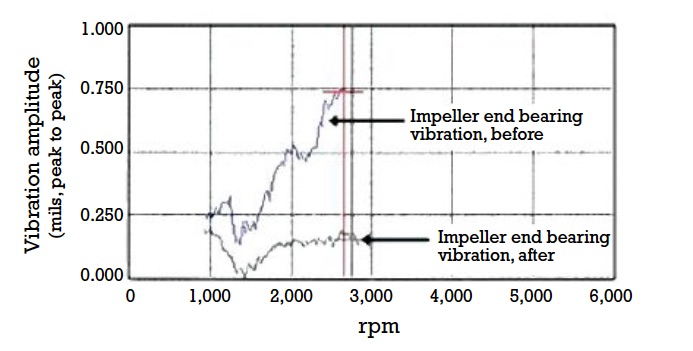
Figure 5: Vibration levels before and after the upgrade
With more than three years in operation on the original blower and two more bearings installed on sister blowers at Dow’s Deer Park operation without a shutdown, it is estimated that ISFD technology has saved Dow around 1,200 hours of production and eliminated the associated maintenance cost of opening and closing the equipment, hydro blasting and field balancing.
Billy Talbot is sales manager at Bearings Plus (BPI). With more than 3,200 bearings supplied with ISFD technology, BPI provides bearing repairs and replacements, custom technology upgrades and rotordynamic analysis. Jong Kim, PhD, is senior consulting engineer for Bearings Plus and senior principal engineer at its parent company, Waukesha Bearings. For more information, visit www.bearingsplus.com.
Allan Mathis is rotating equipment and vibration engineer for Dow Chemical Leverage Services for the Houston Hub. Mathis holds a BS in Mechanical Engineering, an ISO Certified Category III from the Vibration Institute, and has more than twenty-five years of experience in solving rotating equipment and piping problems. For more information, visit www.dow.com.